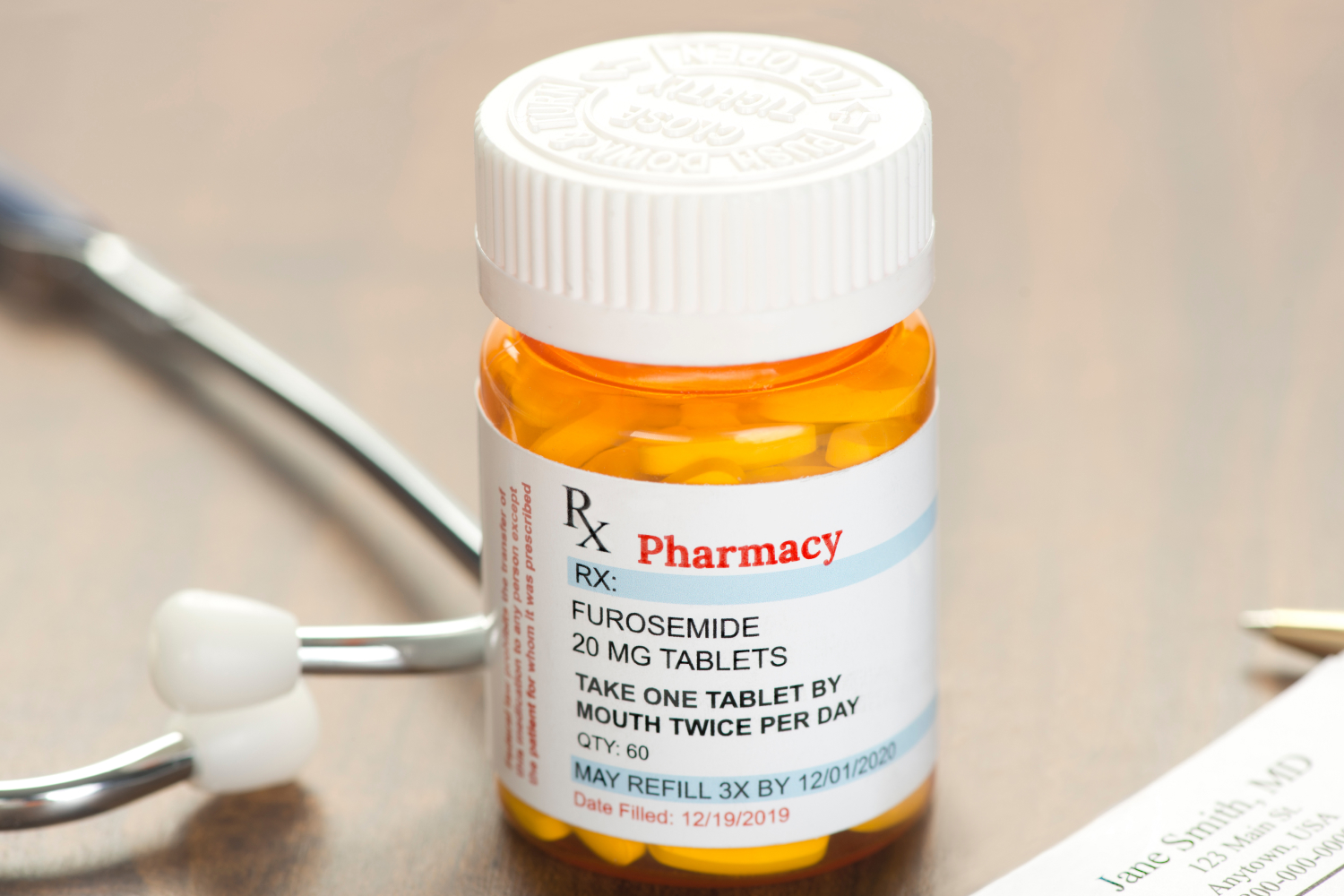Furosemide, also known as Lasix, is a diuretic medication prescribed to treat fluid retention and high blood pressure. As it works by increasing urine output, it is essential for individuals taking this medication to be mindful of their dietary choices. Certain foods may interfere with the effectiveness of furosemide or lead to unwanted side effects.
In this article, we will discuss the key foods to avoid when taking furosemide. By making some adjustments to your diet, you can ensure that the medication works optimally and minimizes any potential risks. The information provided here will help you make informed decisions about your daily food intake while taking this important medication.
Reader's Roadmap
Understanding Furosemide
Furosemide, commonly known as Lasix, is a type of medicine that falls under the category of loop diuretics or “water pills.” It serves as a powerful medication for treating various conditions involving fluid retention, such as heart failure, liver diseases, and kidney disorders.
Loop diuretics primarily work by increasing urine production and promoting the excretion of excess water and electrolytes, particularly sodium and potassium. Furosemide achieves this by acting on a part of the kidney called the loop of Henle, where it inhibits the reabsorption of sodium and chloride. As a result, more fluid is ultimately removed from the body through urination.
One key aspect of furosemide is that it’s a potent diuretic, meaning it can rapidly cause dehydration and electrolyte imbalances if not properly managed. Hence, it is crucial for individuals taking this medication to be aware of their fluid and electrolyte intake, as it may impact the drug’s effectiveness and their overall health.
Clarity and balance should be the guiding principles when modifying one’s diet during furosemide therapy. The goal is to maintain an optimal level of hydration whilst preventing excessive fluid retention. This can be achieved by monitoring sodium and potassium intake and avoiding diuretic foods such as dandelion or juniper.
Moreover, it is vital for patients to follow their healthcare provider’s advice and recommendations on diet, fluid intake, and any required potassium supplementation. As a result, individuals can ensure that their furosemide treatment is both effective and safe while minimizing the risk of adverse effects.
Furosemide and Diet
Furosemide, also known as Lasix, is a diuretic medication commonly prescribed to treat fluid retention and swelling caused by congestive heart failure, liver disease, kidney disease, and other medical conditions. When taking furosemide, it is essential to pay attention to your diet, particularly in relation to sodium and potassium intake.
Sodium is an element commonly found in salt, and it plays a crucial role in regulating fluid balance within the body. While taking furosemide, it is important to avoid foods and drinks with high salt content to prevent exacerbating fluid retention problems. However, eliminating salt altogether from your diet is not recommended, as adults need between 1,500 milligrams (mg) and 2,300 mg of sodium daily.
High-sodium foods to reduce or avoid include processed meats, canned soups, salty snacks, canned vegetables, and certain cheeses. Choosing fresh, whole foods whenever possible can help limit sodium intake. Additionally, it may be beneficial to cook food at home, allowing for control over the amount of salt added during meal preparation.
Potassium is another essential mineral involved in maintaining proper fluid balance within the body. While furosemide works to eliminate excess fluids, it may also cause potassium loss, making it crucial to consume potassium-rich foods to maintain healthy levels. Examples of potassium-rich foods to include in your diet are bananas, spinach, avocado, sweet potatoes, and yogurt.
In addition to sodium and potassium considerations, some herbs should be avoided while taking furosemide due to their diuretic properties. These herbs include dandelion, uva ursi, juniper, buchu, hibiscus, and parsley. Licorice is another herb that may negatively interact with furosemide, so it is best to avoid consuming it during treatment.
A well-balanced diet with appropriate sodium and potassium levels can help ensure the effectiveness of furosemide while minimizing potential side effects. Always consult with a healthcare professional to discuss any specific dietary restrictions or modifications based on individual needs and the specific medications being taken.

Health Conditions and Furosemide
Furosemide, commonly known as Lasix, is a diuretic medication that is often prescribed for a variety of health conditions. It helps to reduce fluid retention (edema) and swelling caused by conditions such as congestive heart failure, liver disease, and kidney disease. The drug works by increasing the amount of urine produced and excreted, thereby reducing the body’s excess fluid and sodium levels.
In cases of high blood pressure or hypertension, furosemide assists in lowering blood pressure by reducing the overall volume of blood in circulation. This alleviates pressure on blood vessels and promotes healthy blood flow, ultimately benefiting the heart, kidneys, and brain.
Edema is another health issue that can be treated with furosemide. This condition, characterized by excess fluid buildup in body tissues, can result from congestive heart failure, kidney disease, or liver disease. Furosemide aids in the reduction of edema by promoting the secretion of excess water and sodium through increased urine production.
When it comes to heart failure, furosemide can alleviate some symptoms by reducing fluid volume and the workload on the heart. The medication ensures that the heart can pump blood more efficiently, relieving strain on the organ and improving overall heart function.
Furosemide can also be beneficial for patients with kidney disease as it helps to regulate fluid balance and reduce swelling. By promoting the excretion of excess water and salts, kidney function is improved, and the risk of further damage is minimized.
For those with liver disease, furosemide can relieve some symptoms by reducing fluid retention and alleviating pressure on the liver. This facilitates the liver’s normal functioning and prevents the worsening of the condition.
However, it is essential to note that furosemide may lead to hypokalemia or low potassium levels in the blood. This condition can be harmful to the heart, kidneys, and blood vessels if not addressed promptly. To minimize the risk of hypokalemia, patients should follow their healthcare provider’s recommendations for potassium intake and have their potassium levels regularly monitored while taking furosemide.
Impact of Furosemide on Potassium Levels
Furosemide, a diuretic medication, is commonly used to treat fluid retention and high blood pressure. However, it is crucial to consider its potential impact on potassium levels in the body. This is because furosemide can lead to hypokalemia, a condition characterized by abnormally low potassium levels in the blood.
Potassium is essential for muscle and nerve function, and maintaining its balance is vital for overall health. Since furosemide increases sodium excretion in urine, it also inadvertently causes increased potassium excretion. This can contribute to an increased risk of hypokalemia, especially in individuals who have pre-existing kidney issues or those taking other medications that might affect potassium levels.
To counteract this potential potassium imbalance, healthcare providers may recommend potassium supplements or dietary changes to ensure an adequate intake of potassium-rich foods. Consuming a well-balanced diet that includes fruits, vegetables, and dairy products can help maintain potassium levels in the body.
Some potassium-rich food options include bananas, oranges, and milk. Fruits like bananas and oranges are not only great sources of potassium but are also easily incorporated into daily meals. Milk and other dairy products provide potassium as well as other essential nutrients such as calcium and protein.
Vegetables are also an excellent source of potassium. For instance, leafy greens like spinach and kale, as well as potatoes and sweet potatoes, are all packed with potassium. Including these in your regular diet can help maintain optimal potassium levels.
In conclusion, it is essential to consider the impact of furosemide on a person’s potassium levels and to take appropriate measures, such as consuming potassium-rich foods or using potassium supplements, to prevent hypokalemia and other related health issues. Regular monitoring of potassium levels is vital for those taking furosemide, especially if they have a pre-existing condition or are taking other medications that might impact potassium balance.
Common Side Effects of Furosemide
Furosemide is a diuretic medication commonly prescribed to treat fluid retention and high blood pressure. While it can be helpful for managing these conditions, it is important to be aware of the potential side effects. This section will discuss some of the most common side effects associated with furosemide use.
Dehydration is a common side effect as the medication works by increasing urine output and removing excess fluid from the body. This can lead to symptoms such as dizziness, lightheadedness, weakness, and thirst. To minimize the risk of dehydration, it is crucial for patients to drink enough water and monitor their fluid intake carefully while taking furosemide.
In some cases, furosemide can cause gastrointestinal side effects, including nausea and vomiting. These symptoms may be mitigated by taking the medication with a light meal or snack. If nausea and vomiting persist or worsen, it is essential to consult a healthcare provider for further guidance.
Vision changes have also been reported as a side effect of furosemide. Patients experiencing blurred vision or other visual disturbances should notify their healthcare provider and have their eyes checked regularly. Swelling of the face, lips, or tongue may also occur in rare cases and should be reported to a healthcare provider immediately.
Dry mouth is another potential side effect of furosemide use. Patients can alleviate this symptom by increasing water intake, sucking on sugar-free candy, or using a saliva substitute as recommended by a healthcare provider.
In rare cases, furosemide may cause confusion or irregular heartbeat. These symptoms are considered serious and should be immediately reported to a healthcare provider. Additionally, changes in urination, such as an extreme decrease in the amount of urine or difficulty urinating, should also be discussed with a healthcare provider as these may indicate potential complications.
Overall, it is essential for patients taking furosemide to be aware of these common side effects and to consult their healthcare provider if any of the symptoms persist or worsen. By being vigilant and proactive, patients can help minimize the risks associated with furosemide use and ensure their treatment is as safe and effective as possible.
Furosemide and Fluid Management
Furosemide, also known as Lasix, is a potent diuretic used to help manage fluid retention (also called edema) in patients with conditions such as congestive heart failure, liver disease, and kidney disease. It works by preventing the reabsorption of sodium and chloride in the kidneys, which in turn increases urine output. This process helps eliminate excess fluid from the body, reducing swelling and improving overall fluid balance.
When taking furosemide, it is crucial to maintain a proper fluid balance, as the increased urine output can lead to dehydration if not adequately managed. Patients should work closely with their healthcare provider to monitor their hydration levels and adjust their fluid intake accordingly. Drinking enough water is essential to prevent dehydration, but excessive fluids can exacerbate the underlying condition causing the fluid retention.
Dietary choices can also significantly impact fluid management while on furosemide. Patients should be cautious with their sodium intake, as high-sodium foods can counteract the medication’s effects and lead to increased fluid retention. The American Heart Association recommends avoiding foods such as processed meats, canned soups, and fast food, which are typically high in sodium. Incorporating low-sodium alternatives in the diet can help promote a healthy fluid balance.
Some herbs have diuretic properties and should be avoided while taking furosemide. Examples include dandelion, uva ursi, juniper, buchu, hibiscus, and parsley, which can intensify the diuretic effects of furosemide, increasing the risk of dehydration and electrolyte imbalances.
In summary, managing fluid retention while on furosemide requires close attention to hydration, dietary choices, and monitoring of urine output. Patients should work alongside their healthcare provider to ensure they maintain a proper fluid balance and make the necessary adjustments to their lifestyle. Remember to avoid high-sodium foods, excessive fluid intake, and certain herbs to maximize the benefits of furosemide and mitigate potential risks.
Furosemide-Interactive Foods to Avoid
When taking furosemide, it’s crucial to avoid certain foods that may interact with, or worsen, the medication’s effects. In this section, we’ll discuss foods to avoid when taking furosemide, to ensure optimal results from the medication.
High-sodium foods, such as chips and processed cheese, should be avoided when taking furosemide. Consuming too much sodium can counteract the medication’s diuretic effect and lead to increased fluid retention. Limiting your sodium intake is essential in managing fluid levels when on furosemide.
Soups and sodas often contain significant amounts of hidden sodium. Ensure you check labels and choose lower-sodium alternatives if needed. It’s best to consume around 1,500 to 2,300 milligrams of sodium daily when on this medication.
Furosemide may interact with caffeine, commonly found in coffee and tea. Caffeine can cause a decrease in the medication’s effectiveness due to its diuretic properties. If possible, reduce your caffeine consumption or discuss your intake with your healthcare provider.
Alcohol should be avoided as it may increase the risk of side effects, such as dizziness and dehydration when combined with furosemide. It’s best to refrain from alcohol consumption while on this medication or speak to your doctor for more guidance.
Lastly, certain herbs may also interact with furosemide, including licorice. This herb may negatively interact with the medication due to its effect on potassium levels in the body. Other herbs, such as dandelion, uva ursi, juniper, and parsley, may also possess diuretic effects, and it’s best to consult your doctor before consuming herbal supplements when taking furosemide.
In summary, avoiding high-sodium foods, caffeine, alcohol, and certain herbs is crucial when taking furosemide to optimize the medication’s effects and minimize any potential side effects.

Furosemide-Compatible Foods
When taking furosemide, it’s important to adjust your diet to support better health. Consuming the right foods can help manage medication side effects and improve your overall well-being. Here are some of the furosemide-compatible foods you should consider including in your diet.
Nuts are a great snack option for individuals taking furosemide. They provide healthy fats, proteins, and essential minerals, including magnesium, which is vital for maintaining a healthy heart and vascular system. Some popular options include almonds, walnuts, and cashews. Just make sure to opt for unsalted varieties to maintain a low-sodium diet.
Whole grains serve as a healthier alternative to refined grains. They contain more fiber, vitamins, and minerals, which can help lower blood pressure and improve digestion. When choosing bread, pasta, and rice, look for whole-grain options such as whole wheat, quinoa, brown rice, and barley.
Magnesium-rich foods are essential for maintaining proper electrolyte balance, especially when taking furosemide. Magnesium aids in the regulation of heart rhythm and helps the body retain adequate potassium levels. Consuming foods like spinach, pumpkin seeds, black beans, and avocados can provide the magnesium your body needs.
Prunes and raisins are suitable for people on furosemide medication. They provide fiber, which promotes healthy digestion, and potassium, which helps counteract the potassium loss that can occur as a result of taking furosemide. It’s essential to consume these dried fruits in moderation to avoid excessive potassium intake.
Orange juice is another food option that can be beneficial for those using furosemide. It contains potassium and vitamin C, which work together to support a healthy immune system. However, be cautious of store-bought juices, as they might contain added sugar or high levels of sodium. Opt for freshly squeezed orange juice or 100% pure options whenever possible.
Incorporating these furosemide-compatible foods into your diet can help minimize the side effects associated with the medication while promoting overall health. Remember to consult with your healthcare professional for personalized dietary advice based on your specific needs and conditions.
Furosemide and Herbal Interactions
When taking furosemide, it is essential to be aware of potential interactions with certain herbs that may amplify the diuretic effects of the medication or create other adverse reactions. Some commonly used herbs that may interact with furosemide include dandelion, uva ursi, juniper, buchu, hibiscus, and parsley.
Dandelion, uva ursi, juniper, buchu, hibiscus, and parsley are all known to have diuretic properties, which means they help remove excess water and sodium from the body. Combining these herbs with furosemide may result in excess diuresis, leading to dehydration and electrolyte imbalances. It is advisable to consult with your healthcare provider before taking any of these herbs alongside furosemide to ensure a safe and effective treatment plan.
Another herbal interaction to consider is licorice. Licorice root contains glycyrrhizic acid, which can lower your blood potassium levels 1. Since furosemide already has the potential to lower potassium levels, consuming licorice while on the medication may increase the risk of developing hypokalemia, a dangerously low level of potassium in the blood.
People who take furosemide should also be cautious with dietary supplements and multivitamins, as they may contain herbal extracts that could interact with the medication. Always inform your doctor or pharmacist about any supplements you are taking to ensure there are no harmful interactions.
In summary, it is crucial for individuals taking furosemide to be mindful of potential herbal interactions. Avoiding herbs with diuretic properties, such as dandelion, uva ursi, juniper, buchu, hibiscus, and parsley, as well as licorice, can help prevent negative effects on your treatment plan. Keep an open line of communication with your healthcare provider and discuss any concerns or questions about herbal interactions when taking furosemide.
Tips for Living with Furosemide
Furosemide is a diuretic medication commonly prescribed to help remove excess fluid from the body. While taking this medication, it’s important to make some adjustments to your lifestyle for optimal results and to minimize potential side effects. Here are a few tips to help you while living with furosemide:
1. Protect your skin from sunlight: Furosemide may increase your sensitivity to the sun, making it crucial to apply sunscreen with a high SPF before stepping out. Additionally, wear protective clothing and avoid prolonged sun exposure when possible.
2. Monitor your electrolyte levels: Since furosemide increases urine output, it can potentially lead to an imbalance of essential electrolytes such as potassium and sodium. Be mindful of your dietary intake, and consult your doctor about any supplements or changes needed to maintain a healthy balance of these electrolytes.
3. Low-fat diet: A diet that is low in fat can aid in preventing fluid retention, which is essential while taking furosemide. Consuming plant-based foods, lean proteins, and whole grains can help in achieving this goal.
4. Stay hydrated: Although furosemide functions by eliminating excess fluids, it’s important to stay adequately hydrated. Ensure you drink enough water daily to prevent dehydration, and consult your doctor about the appropriate amount based on your specific needs.
5. Take your medication as a tablet: Furosemide is available in various forms, including tablets and oral solutions. Be sure to take the tablet form as prescribed, as this ensures the most accurate dosage and increases the drug’s effectiveness.
6. Avoid foods with diuretic effects: Some foods and herbs may have a diuretic effect, which can amplify the effects of furosemide. Examples include dandelion, parsley, and licorice. It’s best to avoid consuming such items while taking this medication.
7. Limit your use of laxatives: Taking furosemide may sometimes cause side effects like diarrhea or constipation. While it may be tempting to use laxatives for relief, doing so can exacerbate electrolyte imbalances. Speak with your doctor before using any over-the-counter remedies to alleviate these symptoms.
Conclusion
In summary, individuals taking furosemide should be mindful of their dietary choices in order to maintain their health and maximize the effectiveness of the medication. A key concern is avoiding high-sodium foods, such as salted chips, fast foods, and processed meals, as these may exacerbate fluid retention and counteract the diuretic effect of the medication.
Furthermore, certain herbs with diuretic properties, like dandelion, uva ursi, juniper, and licorice, should be avoided while taking furosemide, as these may interfere with its function and cause undesirable side effects.
For individuals with health conditions that require a sodium-restrictive diet, such as heart disease, kidney dysfunction or liver problems, adhering to these dietary guidelines may be especially crucial. In fact, organizations like the American Heart Association recommend limiting daily sodium intake to reduce the risk of health complications, such as hypertension, heart disease, and stroke.
In conclusion, making conscious dietary choices and avoiding certain foods and herbs is important for those taking furosemide. Doing so can help promote optimal health, support the intended function of the medication, and minimize the risk of further complications related to cardiovascular health. Always consult with a healthcare professional to ensure that individual dietary needs are being met and to address any concerns related to furosemide use.







Leave a Reply
View Comments